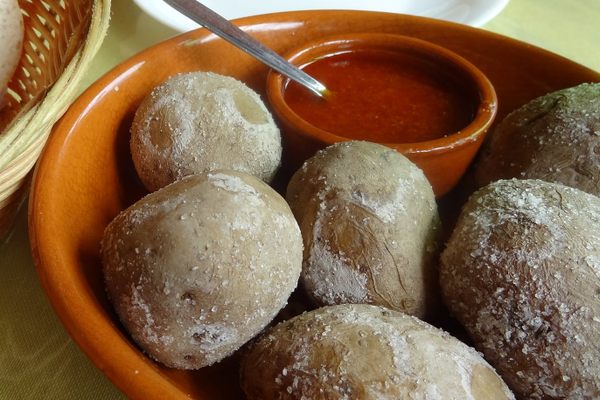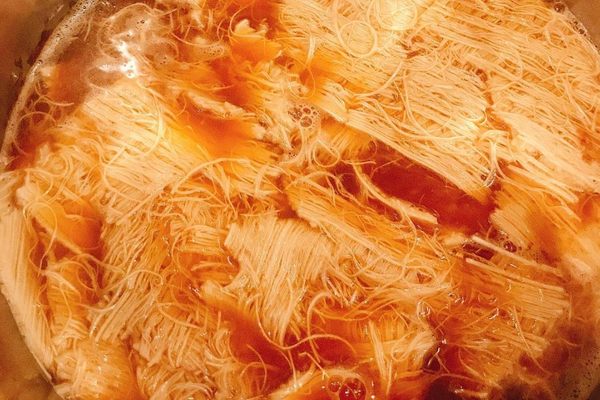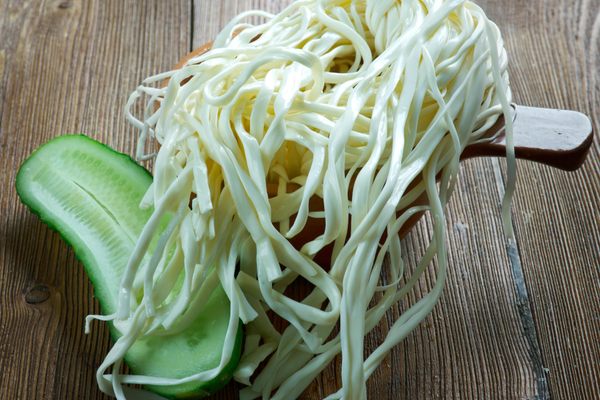Ingredients & Condiments
Canarian Palm “Honey”
On one small island, this golden liquid is both a local delicacy and traditional medicine.
La Gomera, the second smallest of Spain’s Canary Islands, is home to a honey-like substance known as miel de palma. Made from the Canarian palm’s sap (called guarapo), miel de palma begins as a liquid that The Art of Eating likens to a “very mild coconut milk.” Once guarapo is boiled down, the finished product evokes comparisons to smoky, liquid toffee, thin molasses, and treacle. Technically, miel de palma is a syrup, but it remains colloquially referred to as “honey.”
The Canarian government has given La Gomera exclusive rights to the production of miel de palma. Farmers collect the special sap from the top of the tree. They then boil each batch until it’s reduced to a darkish brown syrup. All of the palms used in miel de palma production are wild, so farmers harvest from the limited resource with care. After a four- to five-month tapping season, harvesters leave those palms to regenerate for a few years.
Traditionally, La Gomera’s community used this syrup as medicine for sore throats and colds. While miel de palma remains largely medicinal for locals, it has become a condiment for visitors exploring island cuisine. Tapas restaurants serve miel de palma drizzled over local cheeses, fruit, and ice cream. It’s also incorporated into sweet-savory sauces used to top meat dishes, including duck, rabbit, and sole.
Where to Try It
-
San Cristobal Gastrobar
Calle Ascanio y Nieves, 9 , San Cristóbal de La Laguna, Santa Cruz de Tenerife, 38201, SpainThis tapas restaurant serves crispy-fried eggplant drizzled with miel de palma.
Written By
 rachelrummel
rachelrummel
Sources
- artofeating.com/the-palm-honey-of-la-gomera/
- www.researchgate.net/publication/262548076_Miel_de_palma_composicion_nutricional_de_un_edulcorante_natural
- www.jardin-tecina.com/blog-en/home/2016/palm-honey-a-delight-of-la-gomera/#/
- alimentosdelagomera.com/miel-de-palma/
- buzztrips.co.uk/posts/miel-de-palma-the-sweet-taste-of-la-gomera/
- www.mieldepalma.com/que-es/












